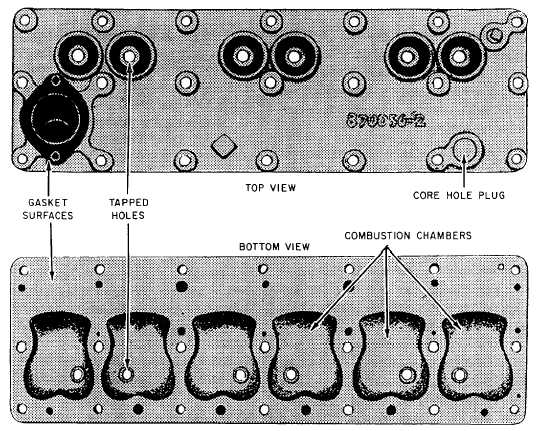Cylinder Block Construction
The cylinder block is cast from gray iron or iron
alloyed with other metals such as nickel, chromium, or
molybdenum. Some lightweight engine blocks are made
from aluminum.
Cylinders are machined by grinding or boring to
give them the desired true inner surface. During normal
engine operation, cylinder walls will wear out-of-round,
or they may become cracked and scored if not properly
lubricated or cooled. Liners (sleeves) made of metal
alloys resistant to wear are used in many gasoline
engines and practically all diesel engines to lessen wear.
After they have been worn beyond the maximum
oversize, the liners can be replaced individually, which
permits the use of standard pistons and rings. Thus, you
can avoid replacing the entire cylinder block
The liners are inserted into a hole in the block with
either a PRESS FIT or a SLIP FIT. Liners are further
designated as either a WET-TYPE or DRY-TYPE. The
wet-type liner comes in direct contact with the coolant
and is sealed at the top by a metallic sealing ring and at
the bottom by a rubber sealing ring. The dry-type liner
does not contact the coolant.
Engine blocks for L-head engines contain the
passageways for the valves and valve ports. The lower
part of the block (crankcase) supports the crankshaft
(the main bearings and bearing caps) and provides a
place to which the oil pan can be fastened.
The camshaft is supported in the cylinder block by
bushings that fit into machined holes in the block. On
L-head in-line engines, the intake and exhaust manifolds
are attached to the side of the cylinder block. On L-head
V-8 engines, the intake manifold is located between the
two banks of cylinders; these engines have two exhaust
manifolds, one on the outside of each bank.
Cylinder Head
The cylinder head provides the combustion chambers
for the engine cylinders. It is built to conform to the
arrangement of the valves: L-head, I-head, or other.
In the water-cooled engine, the cylinder head (fig.
12-10) is bolted to the top of the cylinder block to close
the upper end of the cylinders. It contains passages,
Figure 12-10-Cylinder head for L-head engine.
12-11


